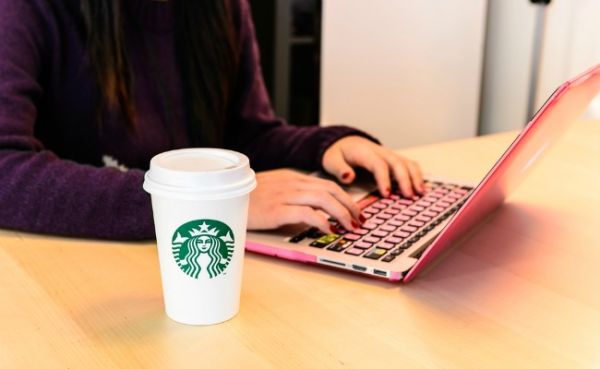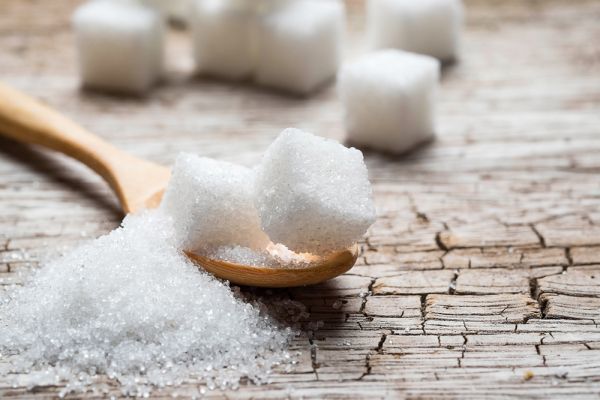
I’ll be the first to admit that I’m a sucker for Starbucks. I wouldn’t call myself an addict—I’ll leave that label for a former co-worker of mine who gets withdrawals if she doesn’t have her eight-pump venti iced chai every morning—but I do fall victim of their constant new drink offerings. And while I didn’t manage to make it into a store in time for any of the Valentine’s Day specials, I did hie myself hence for a Smoked Butterscotch Latte as soon as news of the Butterbeer-flavored drink was announced.
Like I said. I’m a sucker.
For Starbucks, though, suckers like me are what drive the business—the company’s profits are only growing. Just last month, they announced record-breaking first quarter numbers: 9 percent same-store sales increases in the Americas. McDonald’s may be scraping and scratching to get business any way they can, but Starbucks, at least right now, is on top of the world.
The thing is, our Starbucks love doesn’t come from the caffeine. Sure, a Starbucks flat white is my beverage of choice when I find myself in an airport at 5 a.m. or something, but on regular days, I rely on my fancy-pants hipster Chemex pourover setup. (Yes, complete with a burr grinder that cost more than I care to think about right now.) I don’t walk into Starbucks expecting a great cup of coffee. I walk into Starbucks looking for a dirty chai pick-me-up, or a taste of the newest crazy drink.
What I’m a sucker for then, and what Starbucks has us all hooked on, is the novelty of its constantly-changing drink menu as well as its teeth-crumblingly sugary drinks.

Let’s start with the novelty appeal. In a 2014 report detailing the company’s 5-year growth plan, one of the outlined strategies that global chief strategy officer Matt Ryan presented was to create new occasions for customers to visit stores. “Grow store usage across day parts with new product offers,” the report reads. “In addition to breakfast, create new food offerings for lunch, afternoon refreshment and snacks, and evenings.”
Starbucks has, in fact, morphed into a sort of fast food restaurant, albeit with slightly less guilt-inducing options (if you ignore the cake pops and pound cake). Instead of the shame of ordering a Big Mac and fries in a fit of hangry noon delirium, you can instead walk into a Starbucks and fill yourself up on a Chicken BLT Salad sandwich served on whole bread. It must be healthy, right? And while you’re ordering, you might as well get a Strawberry Acai Refresher to wash it down with and perk you up for your inevitable PM slump!
Never mind the fact that that grande Strawberry Acai Refresher you just picked up has 20 grams of sugar in it.
Which brings me handily to my next point: sugar. People. My Fellow Americans. We’re addicted to it. No thanks to companies like Starbucks peddling their sugar-laden wares.
If you don’t already know how bad excess sugar is, then let me educate you. It’s been linked to obesity, tooth decay, diabetes, and heart disease. And yet, Americans consume, on average, 115 grams of added sugar per day—over double the FDA’s new recommended limit of 50 grams. (And the WHO is even more modest with their recommendation: only 25 grams of added sugars for the maximum health benefit.)
Circling back to my former co-worker’s drink of choice, the venti iced chai—according to Starbucks’ nutrition facts, contains 53 grams of sugar, a days’ worth in one 20-ounce drink. And that’s with the venti-standard five pumps. Add three more pumps to that and you get the official scientific reading of Diabetes Waiting to Happen.
It’s not like the iced chai is a big, sugary exception, either. Just look at those new drinks: a tall (which is small because hey, I want modest estimates) Smoked Butterscotch Latte contains 32 grams of sugar, while a tall Teavana Citrus Green Tea Latte contains 28 grams. Then there’s the new report from Action on Sugar, which found that one drink served in the UK, the Hot Mulled Fruit, contained 25 teaspoons of sugar–approximately 105 grams.
Yikes.
Sugar is pervasive, sure, but it’s particularly pervasive on the Starbucks drink menu. The sugar beet is the plant that makes Starbucks run, not some exotic coffee bean. It’s truly difficult to cut the addiction—our bodies are wired to seek out sugar. It helps us store fat, and it stimulates the release of dopamine in our brains. Which is just what we subconsciously crave when it’s the middle of the afternoon and our eyes are drooping at our desks. The dopamine hit from sugar, and the energy hit from caffeine. It’s the perfect combination.
I’m not here to be down on Starbucks, nor am I suggesting that they start tacking nutrition labels onto the sides of their cups (okay, maybe that). What I’m arguing is that we all be a bit more conscientious about what we put in our bodies. I’m the first person who needs to take my own advice: I had a cup of coffee and leftover Valentine’s Day chocolate for breakfast this morning.
But guess what I didn’t have: a Teavana Citrus Green Tea Latte. Because knowledge is power. And I’m eating a salad for lunch.






